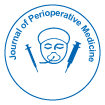
Journal de médecine périopératoire
Libre accès
ISSN: 2684-1290

ISSN: 2684-1290
Zeeshan Ansar
Objective: β-thalassemia is an autosomal recessive disorder which results in the formation of abnormal haemoglobin due to a variety of different mutations found in the HBB gene. These mutations render patients incapable of producing correct form of haemoglobin. The aim of this study was to identify HBB gene mutations in β-thalassemic patients, not included in the common-mutation panel of ARMS PCR, by sequencing HBB coding, intronic and promoter.
Method: A total of 10 samples previously tested for HBB gene mutations by ARMS PCR common-panel (i.e. IVS 1-1, IVS 1-5, Codon 8/9, Codon 41/42 and 619bp deletion) were analyzed by Sanger sequencing. Two healthy subjects were included as negative controls. Genomic DNA was isolated and HBB gene was amplified. Column purified amplified products were utilized for bidirectional cycle sequencing (Big Dye Terminator, ABI, USA).
Results: In the present study, a total of 10 samples were analyzed. Four were males and six females. The Mean of the patients was three years. All patients were diagnosed as β-thalassemia major based on their family history, clinical and laboratory findings. On average, patients were receiving transfusions every second week. Seven rare mutations in HBB gene were detected including point mutations. The mutations spanned in the promoter region HBB:c.138C>A (-88 C>A), exon1 HBB:c.17_18delCT (Codon5 –CT), HBB:c.47G>A (Codon15 G>A), HBB:c.92G>C (Codon30 G>C), HBB:c.50A>C (CAP+1 A>C), exon2 HBB:c.118C>T (Codon39) and intron2 HBB:c.315+1G>A (IVS II-I G>A) and a heterozygous change at codon 6 (GAG→GTG) and also a heterozygous mutation at codon 121 (GAA→CAA) . All control subjects showed normal HBB gene sequence. In addition, a polymorphism T>C in codon3 at position HBB: c.59 was detected in majority of the patients and controls.
Conclusion: Although ARMS PCR is a fast and convenient method for detection of common mutations in the HBB gene, a small subset of patients may be missed because of rare mutations, which would require other means for diagnosis. Sanger sequencing is an accurate and robust technique to manage such patients.